Signs of Over-fermented Dough
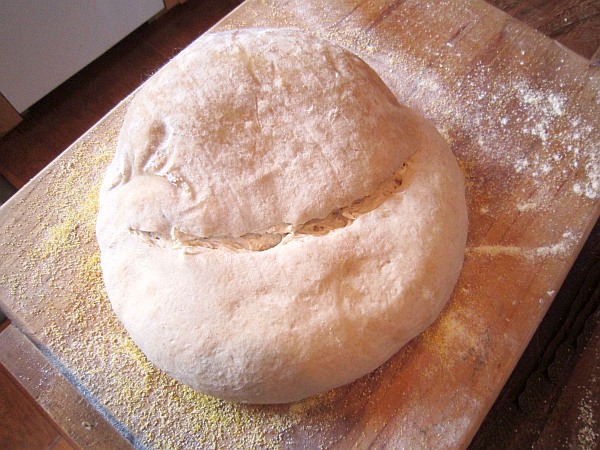
Signs of over-fermentation in your baked loaf:
If your dough gets too warm for too long or you ferment for too long even at the right temp, some of the things you might notice in your baked loaf are:
- Hard crust
- Lack of crust color (very hard to brown even if you leave it in the oven longer)
- When toasting your bread the crumb is resistant to browning and the toast will turn hard as a rock if you persist in trying to brown it
- Lack of oven spring
- A tighter crumb
- Flatter loaf, loaf spreads
- “Flying crust” (can happen with under-fermentation as well)
- Scores don’t bloom/open up.
- Crumb is compressed towards the bottom of the slice and can be gummy.
- A very sour taste (not a pleasantly sour tang like properly fermented sourdough)
- A sour/fermented smell
- You might notice a “corn” flavor to the baked crust (sometimes there is a faint odor like popcorn)
- Crust may have small tears in it, randomly over the surface.
The “corn” flavor is something I have noticed for over a decade in over-fermented dough. It’s hard to describe, but if you’ve over-fermented (especially with a dough that is too warm), I’m sure you’ve experienced it.
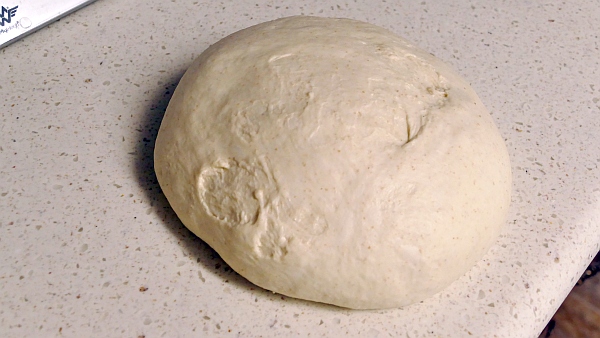
Signs of over-fermentation in your dough:
Over-fermented dough can get fragile and tear easily when you try to shape it (it can even fall apart). The dough can become excessively sticky and spread easily. Sometimes an overly warm dough can even turn grey. The dough will have a “crêpey” feel and look to it (see photo of the dough below), instead of being smooth and shiny.

Over-fermented dough will often smell unpleasantly sour. With extremely long fermented dough, the inoculation rate, hydration, timing and every degree of temperature can make the difference between a successful dough and a ruined dough.
When your dough is over-fermented, the scores will not “open up” during baking but instead will flatten and melt into the dough.
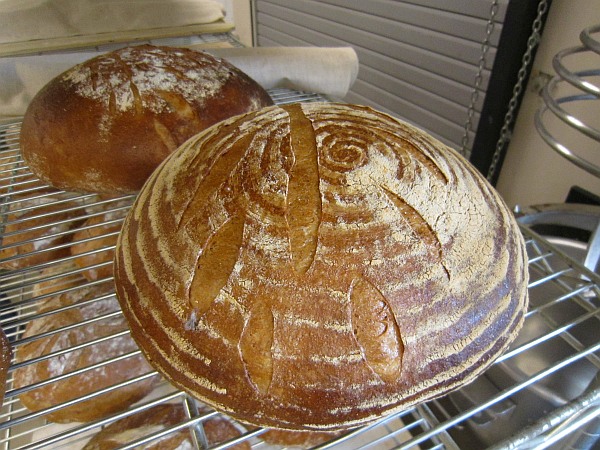
The resulting bread will be flat and not have a good oven spring. The crumb can look dense and compressed, especially towards the bottom of the loaf. This happens because the dough is weak and falls back on itself after trying to rise up.
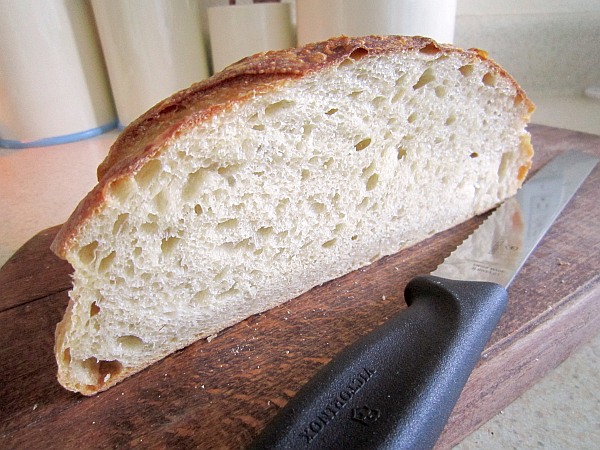
Dough that is over-fermented will start to spread once scored and look bubbly/weak. You’ll notice it falling in a bit or a lot.
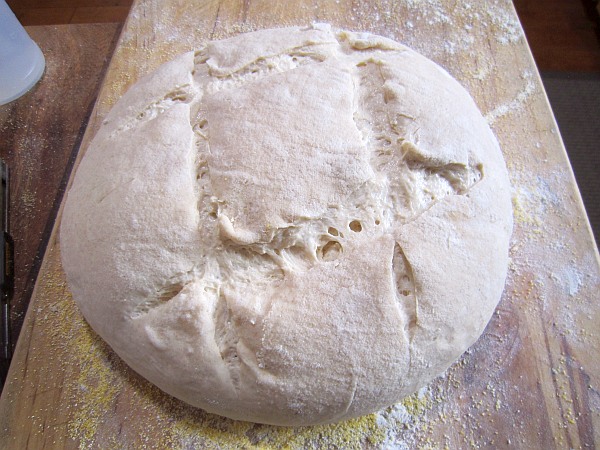

If you notice your dough is over-fermented be sure to score very shallow and use a minimum of scoring slashes. If your dough is under-proofed but you have to bake anyway, score more deeply.
This loaf was over-fermented:
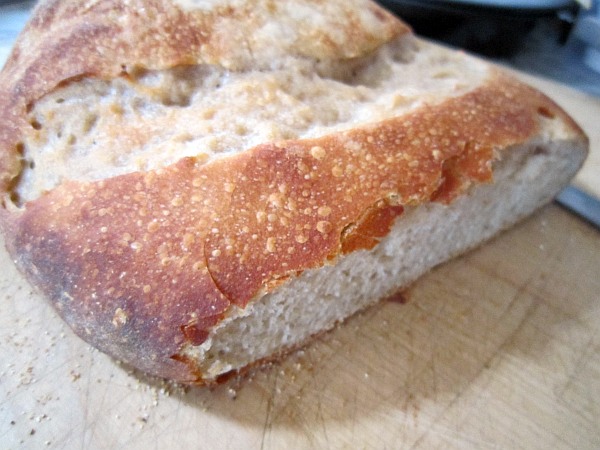
See article on dough temps HERE
Summary:
Over-proofed dough is very soft, when you pull at it, it falls apart easily, it’s sticky, it smells sour/acidic and can have a crêpey look/feel. If you’ve shaped it, it will deflate when you poke at it. While shaping the dough skin can “shred” apart and it will lose it’s integrity easily.
Over proofed dough has had it’s gluten “eaten” or broken down to the point that the strength is gone. The sugars are used up so the crust won’t brown properly. The crust is brittle, hard and pale without a beautiful shine. It smells reminiscent of crackers or corn and has a slight flavor that resembles that too.
The baked crust will have no blooming of the score, the score will sort of melt into the crust, the crust can also have small cracks that go in weird directions as the crust pulls apart during oven spring. And of course, the bread is flat with dense crumb or the crumb compressed towards the bottom. All those things point to weak gluten.
If you use a weak flour to make your dough, it can have attributes that an over-fermented dough has.
Tips to avoid over-fermenting your dough:
- Use a strong high quality flour if you want to work with long-fermented dough.
- If your flour is not as strong as you would like, then don’t do an autolyse. Instead add the salt during mixing as salt will help control/slow fermentation.
- Use lower amounts of starter for long fermented dough.
- Use more starter for fast fermenting dough.
- Monitor your dough temperature, it’s extremely important.
- Cooler temps will protect your gluten longer and slow down fermentation.
- Chill your dough for several hours to slow it down if you need to.
- Warmer temps will speed up your fermentation and weaken your gluten faster.
- Use lower temperatures for whole grain breads, they ferment more quickly anyway.
- Lower hydration dough will ferment less quickly than a high hydration dough.
- If you want to do a long cool ferment (retard), then shorten your bulk ferment.
- Adding a large amount of “old” depleted weak starter will give your dough similar characteristics.
- Use fresh vigorous starter if you will be using a large percentage in your dough.
- Score shallow and shape gently if you feel your dough has over-fermented.
- Over-fermented dough can’t really be recouped, make flat bread with it.
I’ve tried to think of everything that can happen with an over-fermented dough. However, I probably missed a few. If you can come up with some more signs of over-fermented dough/baked loaf, please add your comments below.
.
If you are interested in joining The Baking Network see HERE for more information.
.

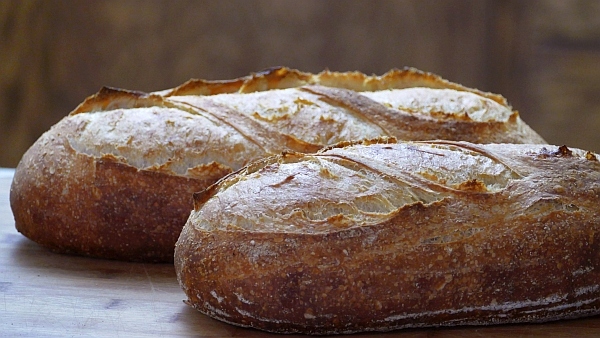
Responses